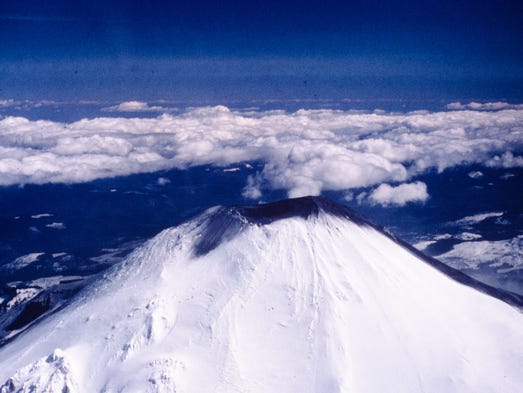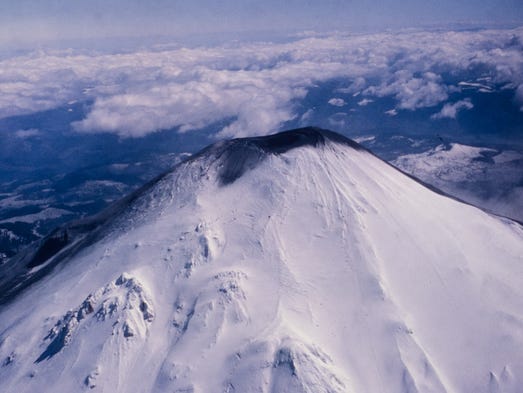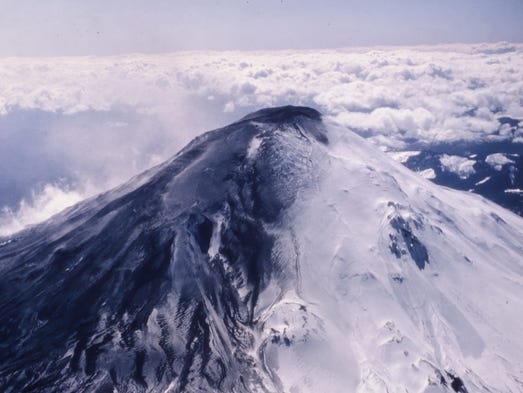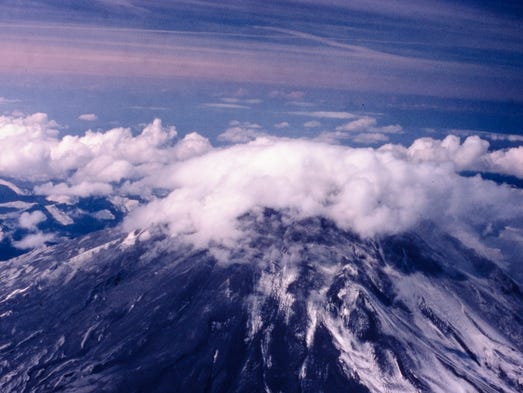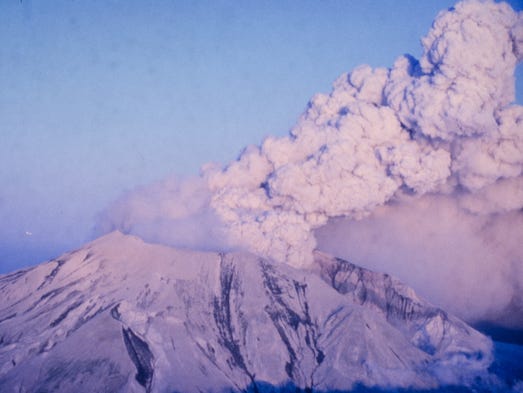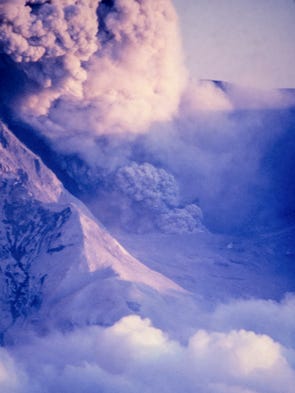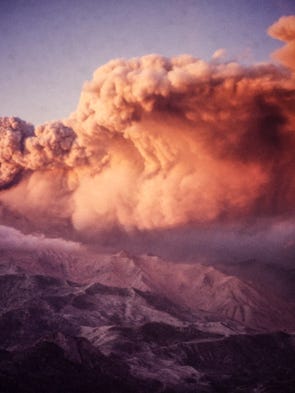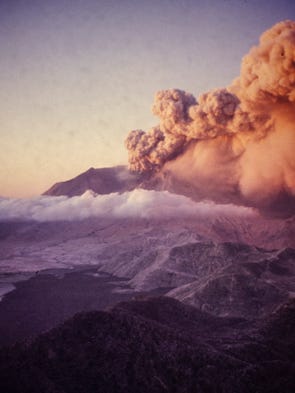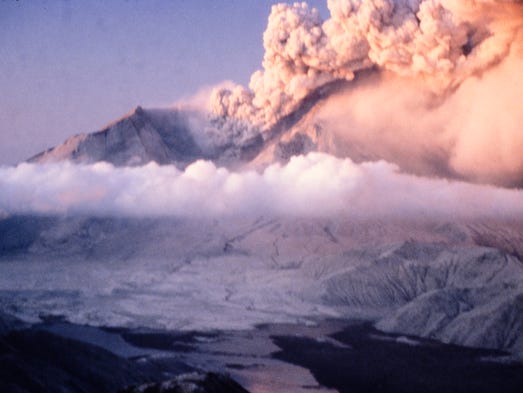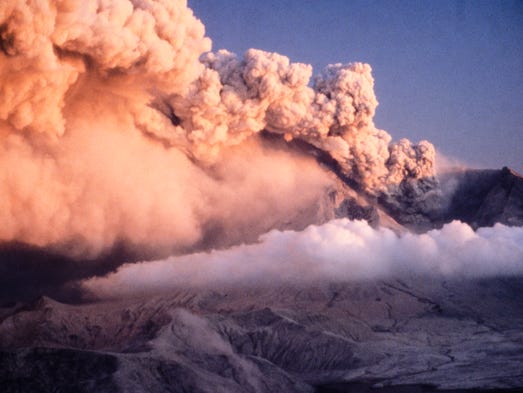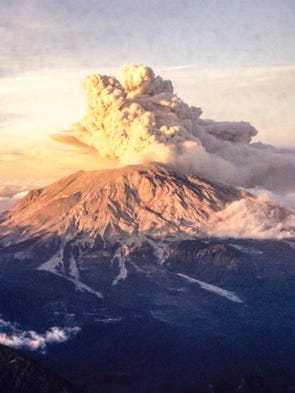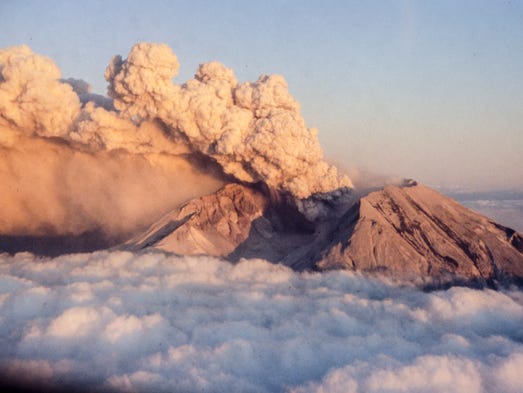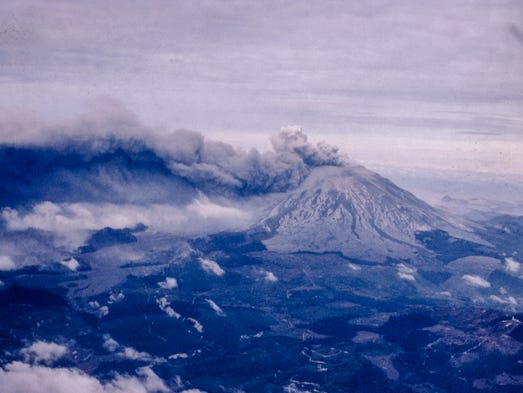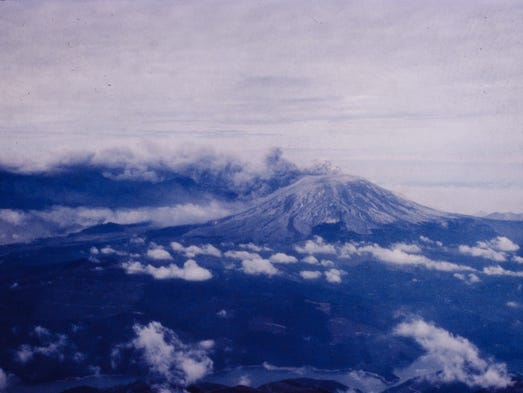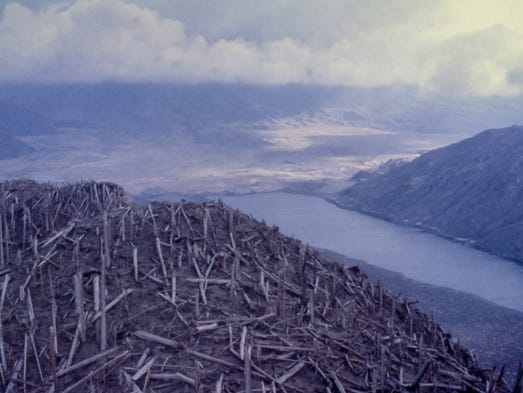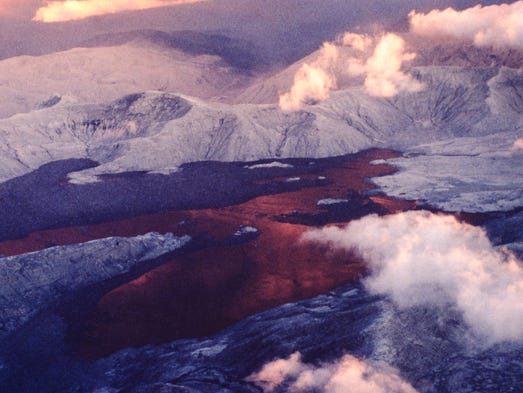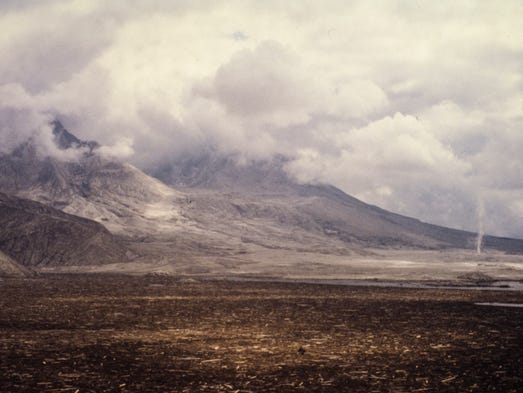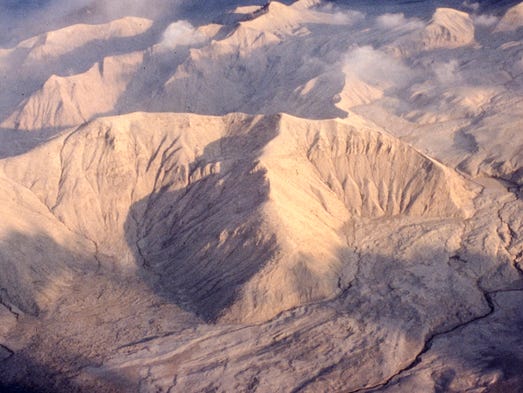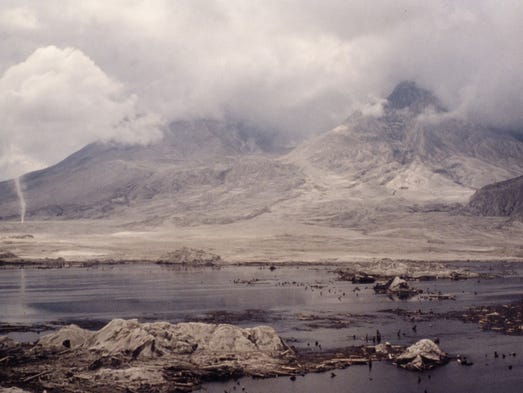Peggy Short-Nottage photographed Mount St. Helens volcanic activity from an airplane with her husband in 1980, before and after the volcano's large eruption that May. Recently, a family friend discovered her film slides and returned them to her. Molly J. Smith / Statesman Journal
Corrections & Clarifications: This article was updated to reflect that Kilauea lies within the Ring of Fire.
As the Kilauea volcano pours lava through a rural neighborhood on Hawaii’s Big Island, volcano evacuees on Monday awaited an "imminent" eruption.
Kilauea is within a range of volcanoes known as the Ring of Fire, which nearly encircles the Pacific Ocean, and in the United States includes volcanoes in Alaska and throughout the West Coast.
Volcanoes in the ring operate independently of each other, though several have erupted recently in the U.S. Those include Mount St. Helens in Washington state, which erupted to kill dozens in 1980, and last went off in 2008.
Here are five active volcanoes in the U.S. that have erupted in recent years, according to data from the US Geological Survey and the Alaska Volcano Observatory.
Mount St. Helens (Washington)
Last reported eruption: 2008
If a volcano erupts in the in the mainland U.S., federal scientists say, look for it to be Mount St. Helens. It's the most active volcano in the Cascade Range, the USGS notes. Known for its deadly eruption that killed 57 people in May 1980, the volcano's last eruption occurred from 2004 to 2008. During that time, enough lava erupted onto the volcano's crater floor to fill 36,800 Olympic swimming pools, the agency notes.
Mount Cleveland (Alaska)
Last reported eruption: 2017
Found among a string of volcanic islands off mainland Alaska called the Aleutians, Cleveland has been in a state of unrest since July 2015, according to the USGS. A series of lava domes and explosions stemmed from the volcano, which makes up half of the uninhabited Chuginadak Island, in Spring 2017. Out of the 160-plus active volcanoes in the U.S., it's one of three currently with "elevated" activity, per to the USGS. The other two: Hawaii's Kilauea and Mauna Loa, both on the Big Island.
Bogoslof Island (Alaska)
Last reported eruption: 2017
Also in Alaska's Aleutian Islands, Bogoslof saw a yearlong eruption kick off as early as December 2016 and continued through Aug. 30, 2017. Ash emissions rose so high as to disrupt several flights, according to reports gathered by the state's volcano observatory. While its eruption may have ended, the volcano does not have a local network to monitor it, according to the observatory.
Pavlof Volcano (Alaska)
Last reported eruption: 2016
Translating to "Paul" from Russian, the snowy member of the Aleutians last erupted on the afternoon of March 27, 2016. The resulting ash cloud, seen by a pilot, eventually reached 35,000 feet above sea level and extended 400 miles northeast into Alaska's interior. Ash fall occurred nearby, with activity trickling through summer.
Kanaga Volcano (Alaska)
Last reported eruption: 2012
On the northern tip of the Aleutians' Kanga Island, the volcano's summit was reported as steaming on Feb. 19, 2012. One resident on nearby Adak Island noted an "acrid odor" that caused throat irritation, per the observatory report. Tremor-like bursts followed, with plumes of vapor occuring that April.
